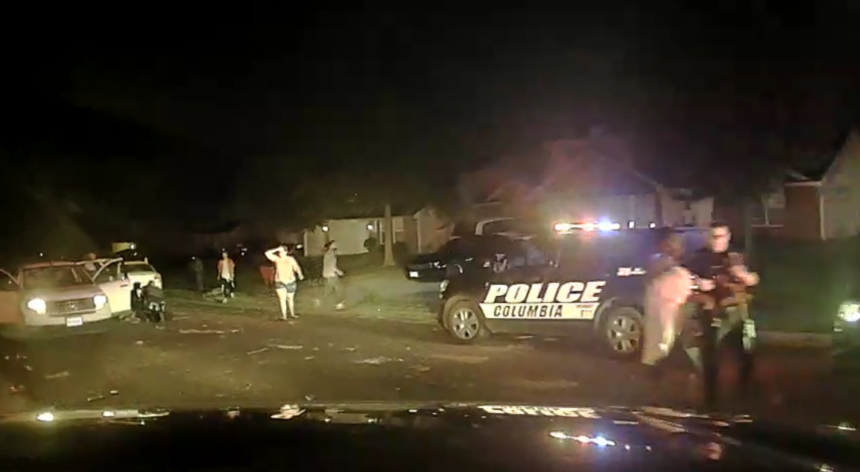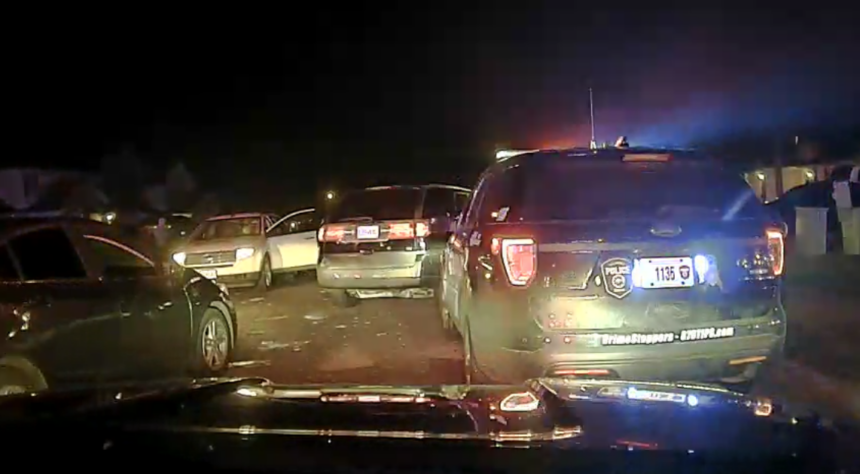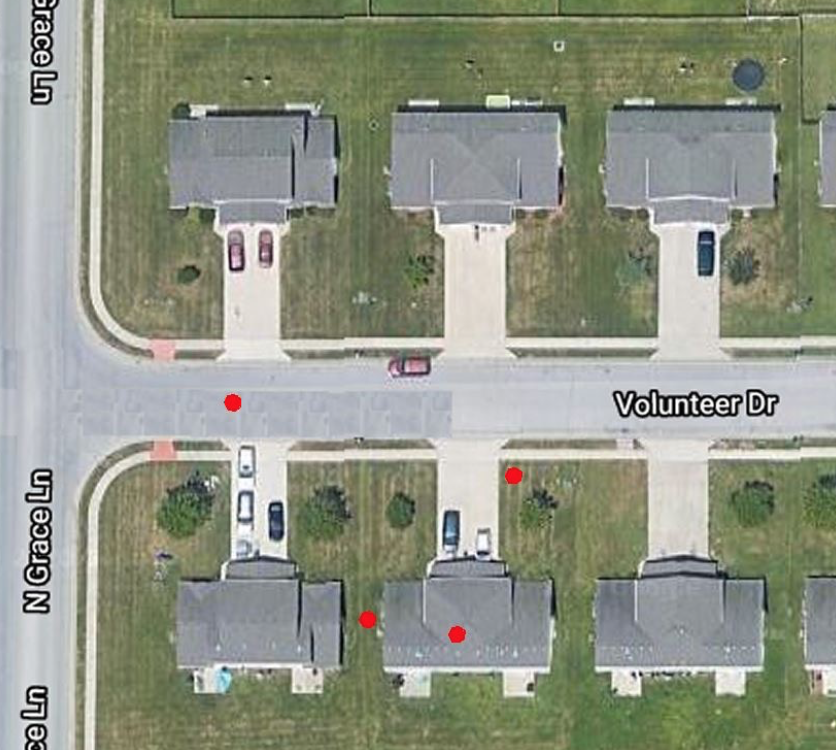Columbia police, dispatchers implement changes after Volunteer Drive shooting






COLUMBIA, Mo. (KMIZ)
Columbia police and Boone County Joint Communications are working to improve communication after it broke down during a shooting in northeast Columbia, preventing EMS crews from entering a scene to help victims.
Three people were injured and two were killed in a shooting on Volunteer Drive early on the morning of July 5 during an Independence Day celebration.
Around 12:15 a.m. that night police received reports of a shooting near the intersection of Volunteer Drive and North Grace Lane. When they arrived they found multiple people with gunshot wounds, including an 11-year-old girl named Ri’ajauhna, the last name was withheld per the family’s request, and 38-year-old Tara L. Knedler.
Columbia police detained a 16-year-old in July in connection with the double homicide.
According to a news release, police released the teenager to juvenile office authorities on charges of two counts of second-degree murder, two counts of armed criminal action and two counts of unlawful use of a weapon.
Police say, despite paramedics not entering the scene, it has been determined if they had they would not have been able to save the victim's lives.
Columbia police and joint communication wrote after-action reports following the incident outlining what happened and where there was room to improve.
Columbia police, Boone County Joint Communications, the Columbia Fire Department, Boone Hospital Center and University of Missouri Hospital Emergency Services met to discuss the incident.
"In this particular case it did involve multiple agencies so we sit down ... to talk about, 'Hey, how can we do better,'" CPD Assistant Chief John Gordon said.
Gordon wrote the report after the shooting. It outlines several areas where there is room for improvement.
One of the main issues that prevented EMS crews from going into the scene was unclear language on whether the scene was "stable," Gordon said.
"The biggest challenge that we had in this incident was the amount of radio traffic and input to our dispatchers," said Joe Piper, deputy director of Boone County Joint Communications.
"That term (stable) is important to us because ... traditionally that tells us it's safe for fire, EMS to respond in," Piper said. "In this instance we had difficulty in making that determination."
According to Boone County Joint Communications' after-action report, at one point during the incident when the main law dispatcher inquired about units responding, it was unclear if an officer said, "No, where are my medics?" or "Go, where are my medics?"
Piper said some communication fell through the cracks because dispatchers entered information into the computer-aided dispatch system, which communicates with the mobile devices units have in the field. For example, the laptops police officers have in their patrol cars.
"We have to emphasize this with our folks continually is that just because information is entered into that system, we don't want to assume, especially in an event of this scope that they're going to see that," Piper said. "They may not see it. It may be there, but they may not see that. We want to verbally relay that."
He said there were instances when patients' locations were not verbally communicated.
The report attributed most of the trouble to a single instance of miscommunication.
According to the report, "a misperception based on an inference made during face-to-face communications between the law dispatcher and fire/EMS dispatcher contributed to a statement that fire and EMS personnel were not willing to respond into the scene rather than communicating that fire/EMS were waiting for confirmation that the scene was stable."
Piper said the statement they were unwilling was inaccurate.
"It wasn't that they were unwilling, it was that we were unable to make a determination if the scene was stable," he said.
Piper said dipsatchers are trained to not send unarmed people into a scenario where they are defenseless.
Following discussions, agencies will now use each other's radio channels to communicate, something they did not do before.
"In the past ... you just didn't talk on another person's radio channel, right? That's like walking into someone's house without being invited," Gordon said.
He said the goal is, if something is unclear, an agency can get on another agency's channel and ask for clarification or help.
"We had at one point probably close to 30 officers on the scene and a lot of people trying to talk on one radio channel. So it's pretty congested," Gordon said.
Piper said major incidents require a more streamlined process, instead of relying on dispatchers for separate police and EMS operations to have to communicate instructions with each other and units in the field.
Gordon said the police department is working to ensure officers are trained in active assailant situations as a way to prevent a repeat of the July 5 incident.
"Part of that is it kind of goes against what you're trained to do, and what I mean by that is leave injured people behind," Gordon said.
The report from CPD said the first two arriving officers were out of service because they were providing trauma care to 11-year-old Ri’ajauhna.
"Our job there is to secure that scene, our job there is to make sure there's no more shooting going on, no more people hurt, and then honestly, then go into the rescue mode of medical care," Gordon said.
Columbia police use the acronym HIPS to describe the safety prioritization at a scene: hostages, innocent, police, and finally, suspect. This helps officers remember it is their job first to remove hostages from dangerous situations and help other innocent people at the scene, while ensuring there is no longer an active threat.
Gordon said every incident is different, but this provides guidelines for officers.
CPD's after-action report said there were around 100 people at the scene when officers arrived. Gordon said the first two responding officers got about 30 feet into the scene before finding the young victim and focusing on trauma care for her.
Police are also working to clearly identify a casualty collection point where officers take victims to get medical care. Collection points are safe places where EMS and fire crews can get their large trucks and equipment.
Gordon said police have been doing this, but did not call it a casualty collection point. They are now working to make sure officers recognize the terminology.
During the shooting, officers drove victims directly to the hospital in their patrol vehicles instead of taking them to an ambulance. Now he says officers are being taught to drive patients to the waiting ambulance.
Piper said departments have identified the need for a unified incident command, where a dispatcher would communicate with an incident commander in the field.
This would allow for direct contact with someone overseeing what is happening at the scene.
Gordon said CPD is still working to implement training from what they have learned from the incident.
"I'm confident if we were to have a scene like this we would do it better. We may not be perfect because there's always room for improvement but we'll do better and I think that's all we can ask right now," Gordon said.
Piper also said now that dispatchers are comfortable with the changes in communication they feel more prepared.
"I would like to think that if the same scenario happened today we'd be in a much better place than what we were with this incident," Piper said.
